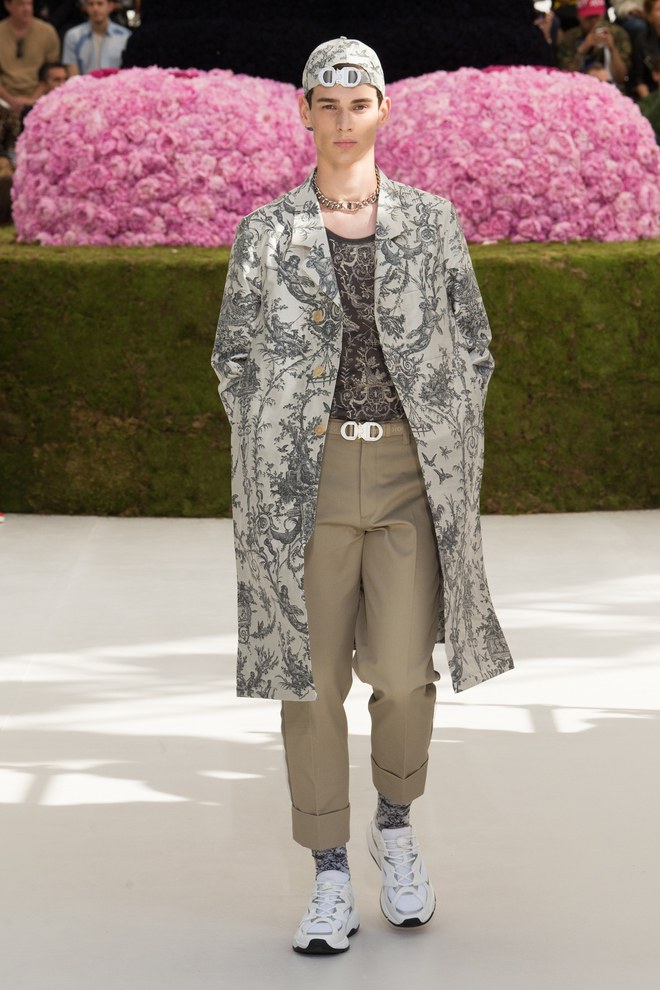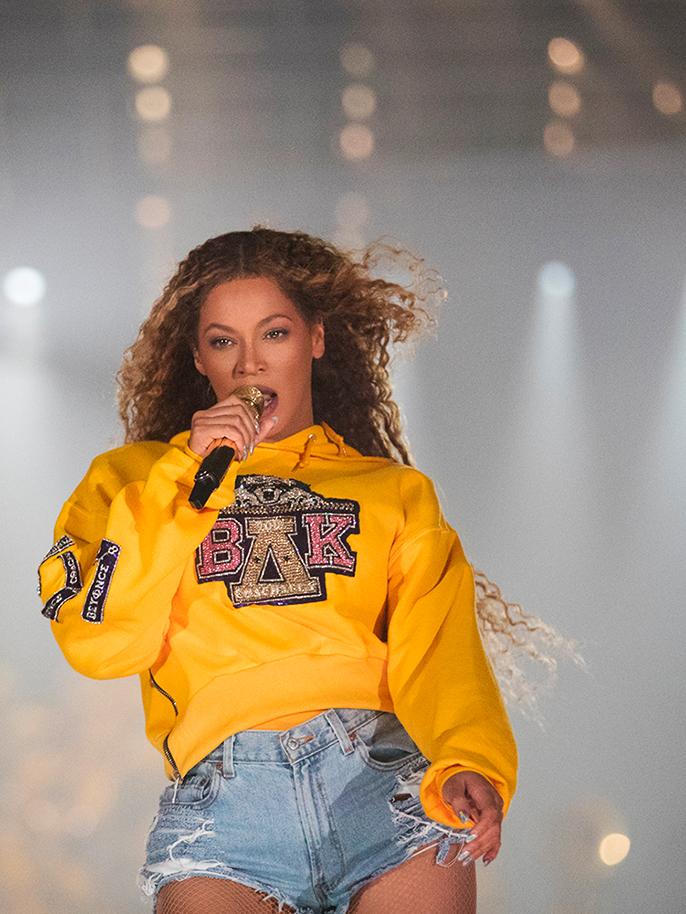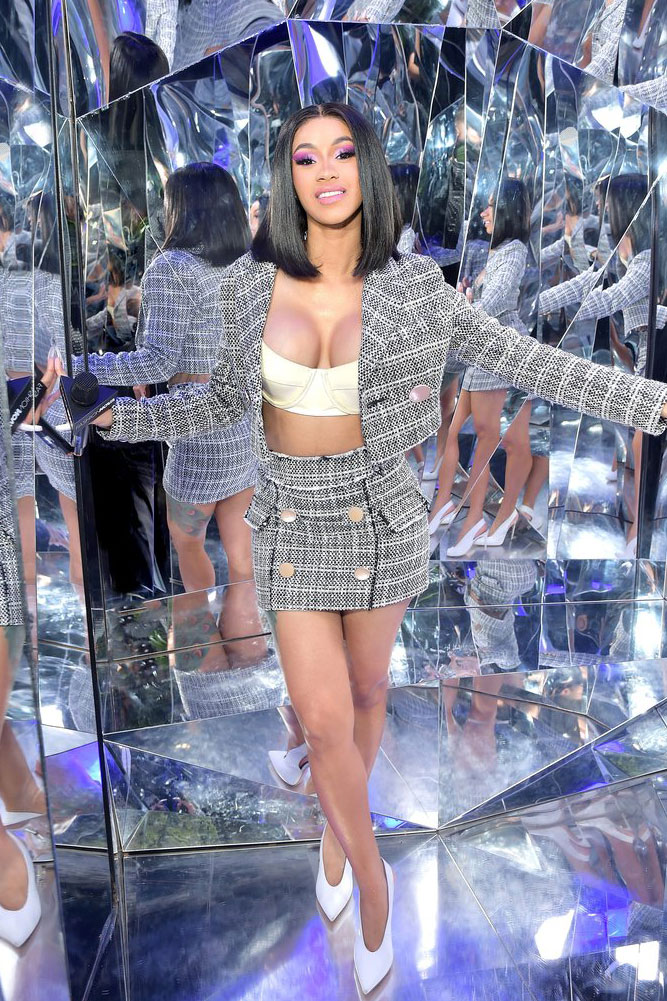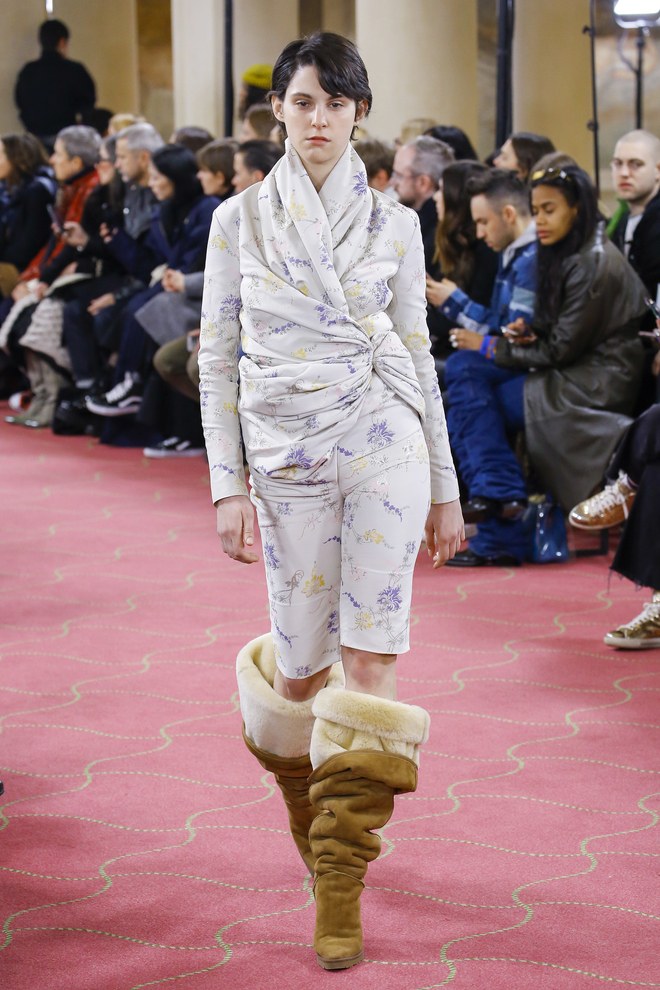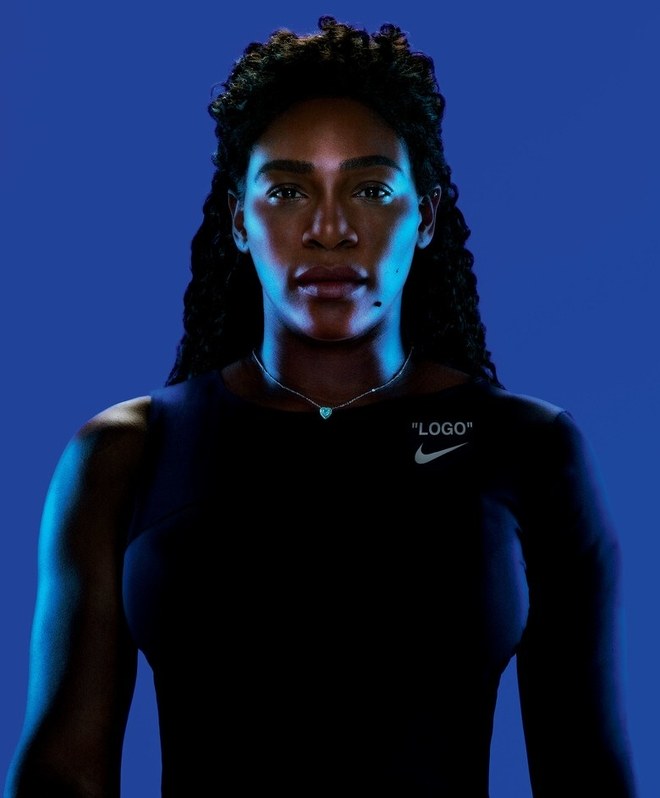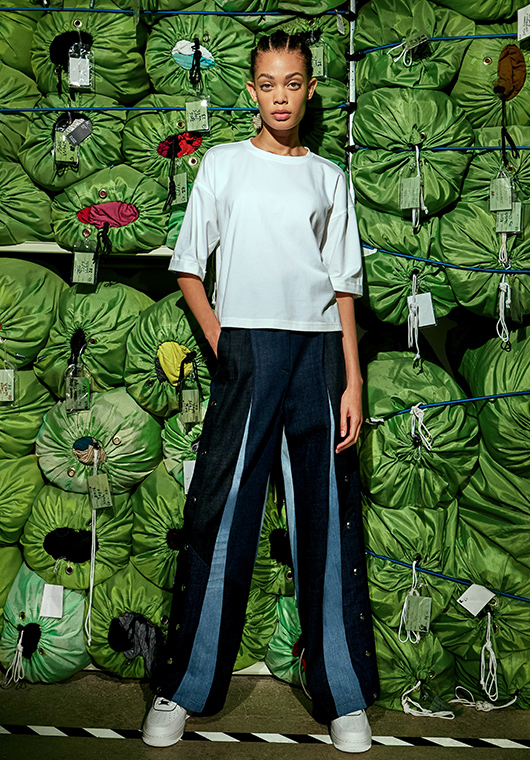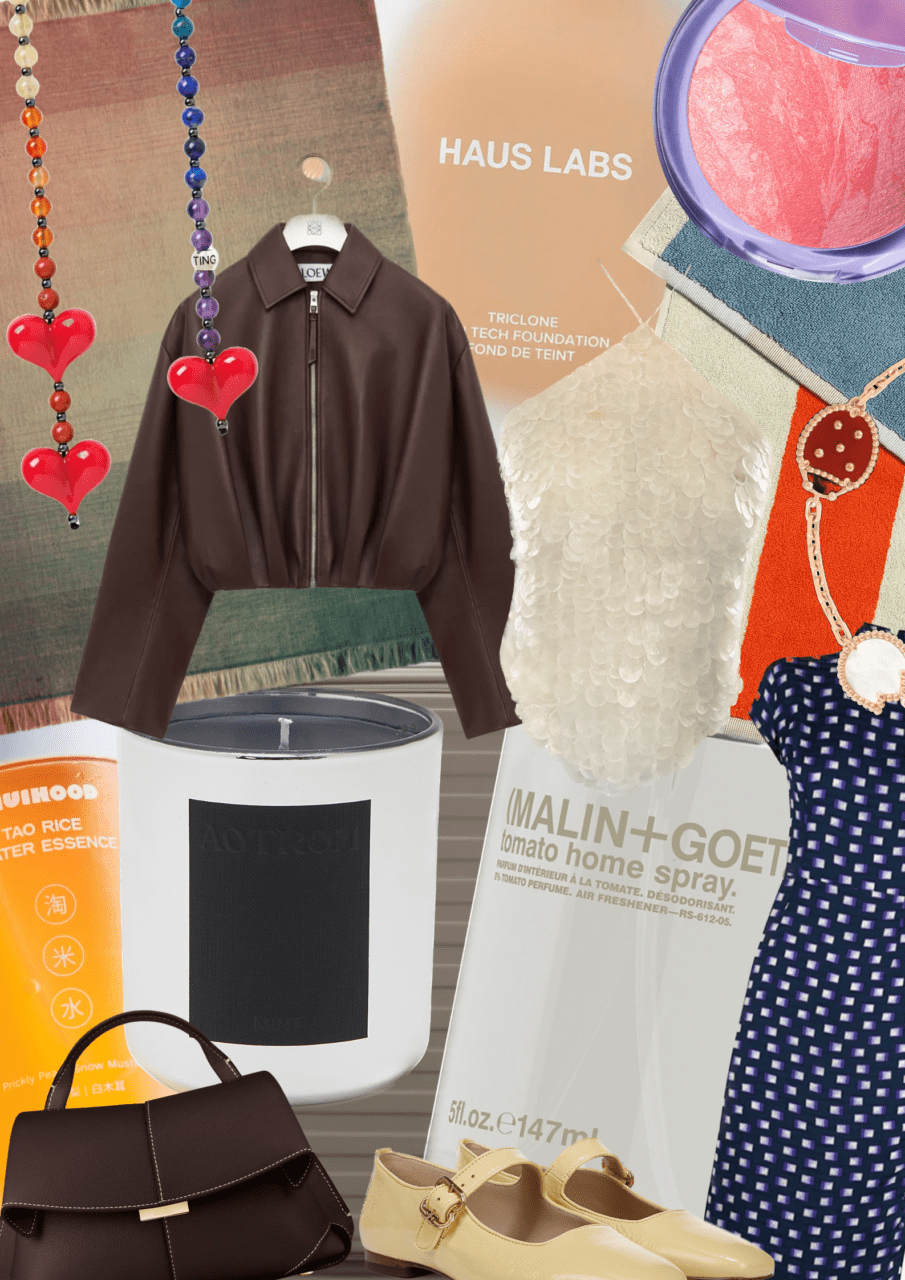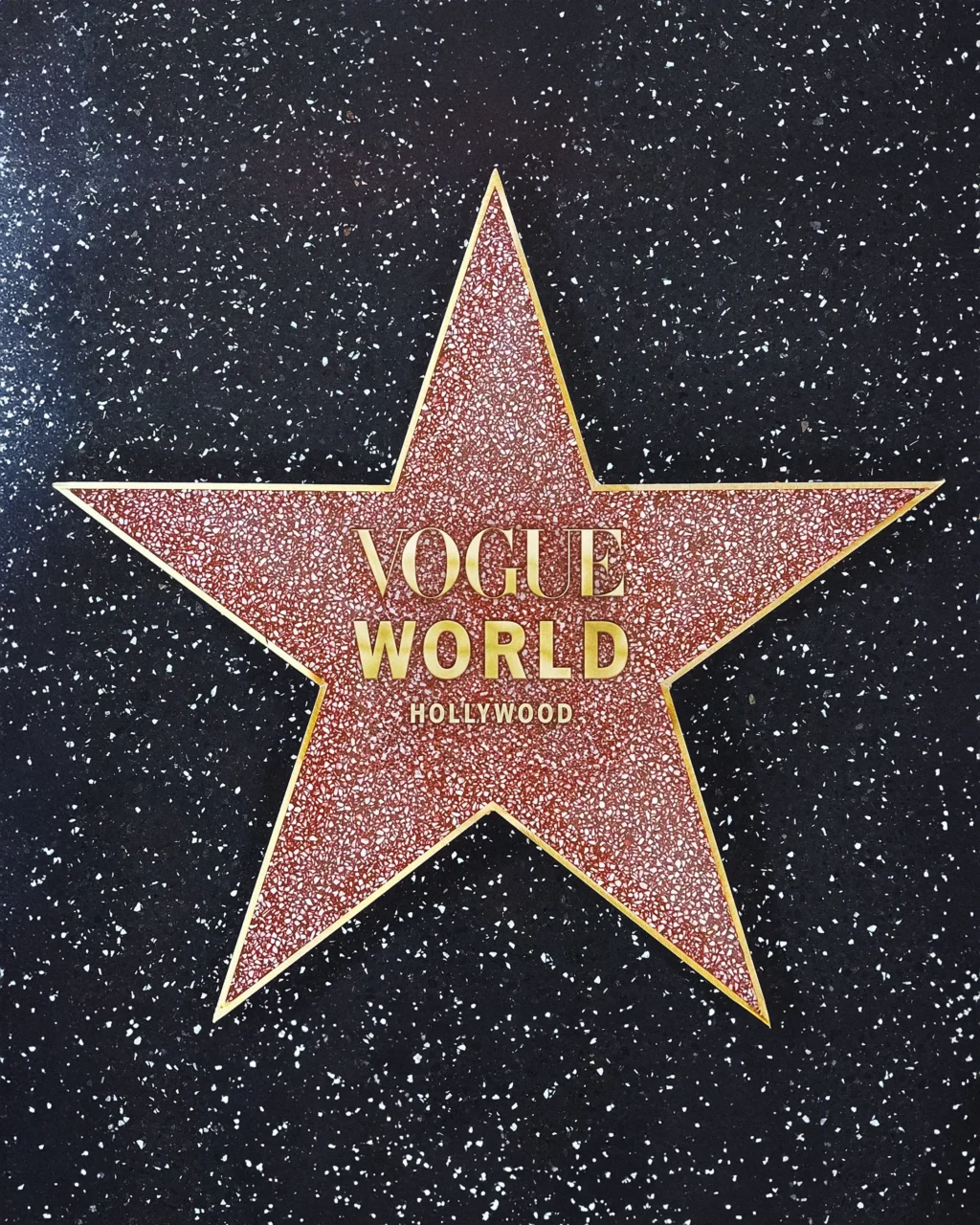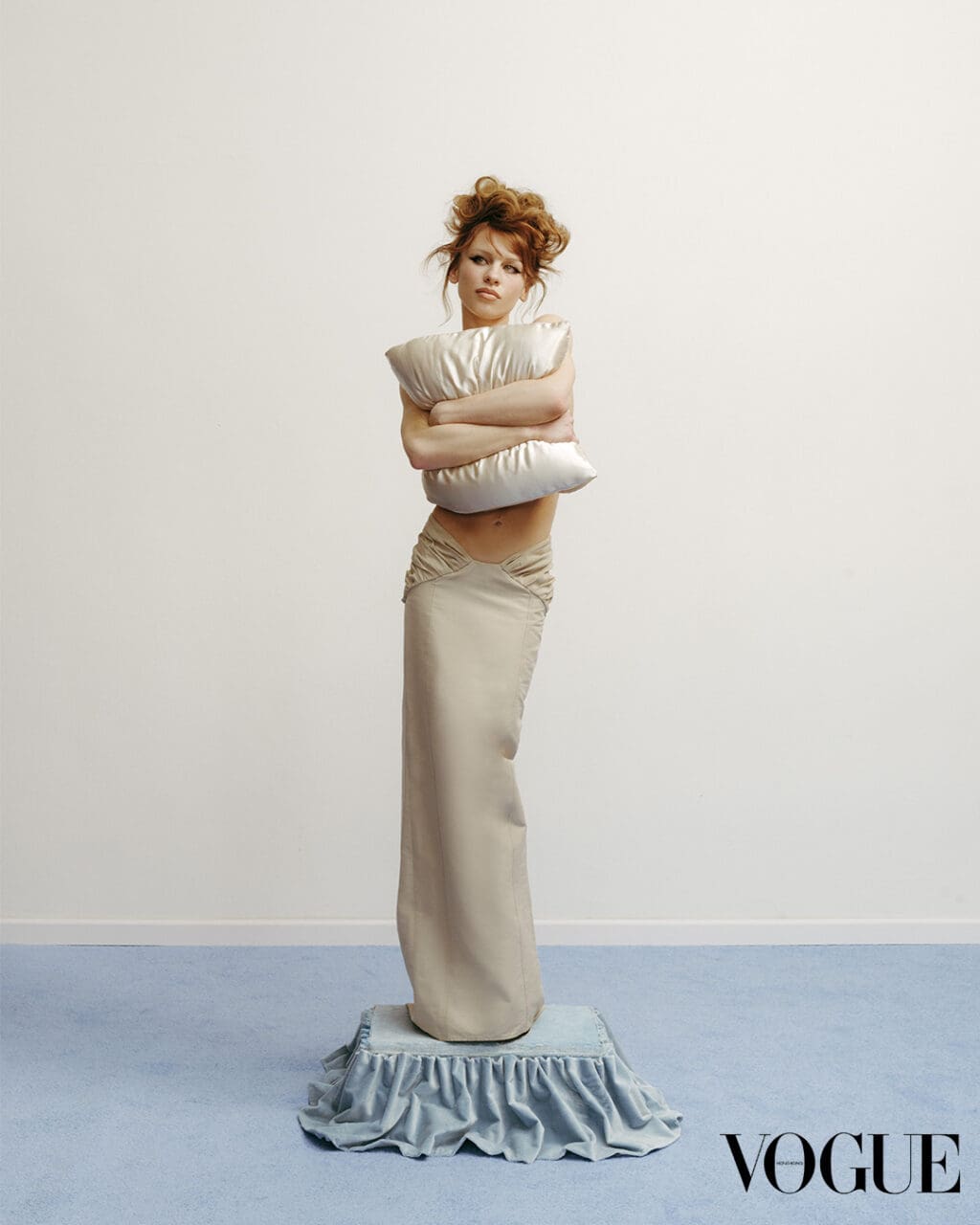Tired: The letter X. As the unofficial signage for a collaboration in fashion, the letter has been used and abused by countless brands in 2018. According to a quick inbox search, I was emailed about collaborations about 1,450 times this year. That’s over 30 collaborations announcements per week, move than five per business day. How did something that was once a niche aspect of the fashion business—Vogue did not use the word collaboration to describe a fashion partnership until a 2004 article about the opening of Dover Street Market—become an essential practice for brands?
Chalk it up to our communal way of life. The idea of a designer as isolated genius is long dead—this year’s many designer hirings, firings, and reshufflings prove it. Instead, a truly contemporary designer (and a truly modern brand) must be relatable and accessible, a savvy social communicator, and the center of a community of creatives, artists, muses, and friends. No one does it alone. In Vogue’s 2004 article about the DSM opening, Rei Kawakubo herself touted the importance of working together, saying, “We’re sharing the space, but no one is losing their identity. If anything, what each of us does is somehow accentuated. The result can only be positive.”
But just five paragraphs later in the same article, Vogue’s Mark Holgate presaged the the changing of the tide, a time when collaborations would go from artful statements on the power of teamwork to a corpo-cool buzzword. “A glance back at history tells us that revolutions have a tendency to be sublimated back into the status quo.” What to do when the revolution of collaboration backfires? Revolt again.
Wired: These 10 new modes of collaborating revitalized, tweaked, and reshaped the idea of a fashion-world partnership this year. May we all take these as lessons for 2019—oh, and here’s a bonus eleventh: Retire the X.
Dior Men Spring 2019
Photo: Yannis Vlamos/Indigital.tv
1. Invest in Longer-Term Collaborations
Kim Jones’s first Dior Men collection was buzzed-about not just for its hybridization of workwear and couture trends, but for the list of popular designers Jones had brought under the umbrella of Dior. Yoon, the cofounder of Ambush, was announced as Dior Men’s director of jewelry. Matthew Williams, the indie maestro of Alyx, designed custom buckles for Jones’s first two collections. Rather than tout these partnerships as traditional collaborations—or worse, hire Yoon and Williams without crediting them—Jones instead built a community of creatives that he will continue to work with for the foreseeable future.
Moncler utilized a similar strategy for its Genius program, which was unveiled at a blockbuster event during Milan fashion week in February. Partnerships with designers ranging from Pierpaolo Piccioli and Simone Rocha to Craig Green and Noir’s Kei Ninomiya were rolled out throughout the year and around the world, with many designers brought back for a second season. Creative continuity not only gives customers something to rely on and relate to, but adds an authenticity to these collaborations.
Matty Bovan x Coach Spring 2019
Photo: Yannis Vlamos/Indigital.tv
2. Mega-Brands Should Use Their Resources to Celebrate Young Talents
The odds are stacked against young designers trying to make it in fashion with small budgets and little access. Over the year, several large brands created mutually beneficial partnerships with rising talents, allowing the upstarts to expand their reach and, presumably, their revenue, while the retailers gained a bit of underground clout. The list of large-meets-small collaborations is weighted in favor of Britain’s next gen of stars: Topshop x Halpern, Coach x Matty Bovan, Liberty London x Richard Quinn. Asos signed up Queens-born LaQuan Smith, but it should be happening more often on this side of the Atlantic.
Louis Vuitton Cruise 2019 accessory by Grace Coddington
Photo: Courtesy of Louis Vuitton
3. Mega-Brands Can Also Celebrate Fashion Legends
Riccardo Tisci’s first task at Burberry was not to redesign the logo or rethink the runway show—though ultimately he did both. Way back in July, the designer revealed that he would be collaborating with the grand dame of British anarchy, Vivienne Westwood. The culture clash of heritage brand and antiestablishment designer made headlines. In a race for newness, Tisci was making space to celebrate a fashion legend who shaped the look of London in the ’70s and ’80s.
At Louis Vuitton, Nicolas Ghesquière took a similar tack, asking Grace Coddington to design a collection of accessories inspired by their pets. By teaming with Coddington, Ghesquière not only cemented the importance of her influence and her ability to affect fashion from behind the scenes, but he also proved that fashion can be more than a business—between fittings and shoots and cocktail parties we manage to make lifelong friends, too.
4. Celebrity Collaborations Better Create a Big Social Impact
Coachella is now Beychella—that’s just how it is! But rather than let her monumental performance become just a flash in a newsfeed, Beyoncé took things to the next level with Balmain. Following her double-header gigs, she made her Olivier Rousteing–designed looks available for her fans to purchase around the world. What’s more, Balmain donated proceeds from each sale to the United Negro College Fund, where Beyoncé donated $100,000. Dressing like Beyoncé and doing good? That’s a win-win.
5. Celebrity Collaborations Better Be Authentic and Affordable
Should you not have $700 USD to spend on a Beyoncé-approved sweater, consider Cardi B’s entrée into the design sphere. Long the unofficial spokeswoman for Fashion Nova, the rapper made it very official by creating her own 80-piece collaboration with the brand this fall. Featuring Cardi-approved styles like a patent red trench and slinky minidress, the range reflected the way the rapper actually dresses. “It’s really more of the things that I always wanted to wear, but more affordable,” Cardi told Vogue. With each piece selling for under $100 USD, it made the fantasy of dressing like a celebrity a reality for Cardi acolytes everywhere.
World Food Programme x Balenciaga
Photo: Monica Feudi/Indigital.tv
6. If You Must Make a Slogan Tee, It Needs to Have a Real Message
Politically minded tees have been the rage since the darkest day of 2016. But few pack as much of a punch as those from Balenciaga’s World Food Programme collaboration and Sacai’s linkup with The New York Times. Proceeds from the Balenciaga T-shirts benefitted the WFP, and with Demna Gvasalia’s stamp of approval, they were one of the season’s most Instagrammed items. In close competition were Sacai’s NYT tees, which have been worn by celebrities like Frank Ocean and Justin Timberlake. Featuring the newspaper’s advertisement heralding the importance of truth in journalism, the shirts carry a powerful message in the era of “fake news.” If only a purchase of the tees came with a free subscription.
Y/Project x Uggs
Photo: Luca Tombolini/Indigital.tv
7. Remixed “Ugly Shoes” Will Have to Beat Rick Owens Birks and Y/Projects Uggs
Let’s give credit where credit is due: Christopher Kane is the original king of the ugly shoe collaboration. Back in 2016, the British designer took on Crocs, leaving mouths agape in his front row and across the Internet. Many followed in his stead, but few have evolved beyond aesthetic shock value. Enter Rick Owens and Glenn Martens, who breathed new life into Birkenstocks and Uggs, respectively. This spring, Owens debuted his first Birks collaboration with all-black and all-gray pairs of the Arizona sandal—one in leather and one in pony hair—that elevated the shape and imbued it with Owens-grade chic. At the Fall 2018 show for Y/Project, meanwhile, Martens created Ur-Uggs that reached all the way to the thigh and produced a trompe l’oeil effect of being about seven pairs of boots layered atop each other. Practical? You’ll have to ask our own Liana Satenstein, who test-drove a pair, about that. But practicality is not the real message of either shoe. Both of these designs played up the very elements that make these shoes “ugly” by popular standards—the thick straps, orthopedic footbeds, rounded slipper toes, and shearling throats. Consider it a very modern take on the jolie laide.
Serena Williams in Virgil Abloh x Nike
Photo: Courtesy of Nike
8. Sometimes Three Heads Are Better Than Two
With the technological know-how of Nike as the connective glue, Virgil Abloh and Serena Williams rethought the concept of performance apparel and the codes of tennis dressing with two groundbreaking U.S. Open looks this year. By the time Williams served her first ball her one-shouldered lilac and black tutus were international news, and remained so right up to the final, where Williams was defeated by Naomi Osaka. The loss on the court didn’t take away from the big risk and big payoff of this three-way collaboration, bringing technology, fashion, and sport together in a new way.
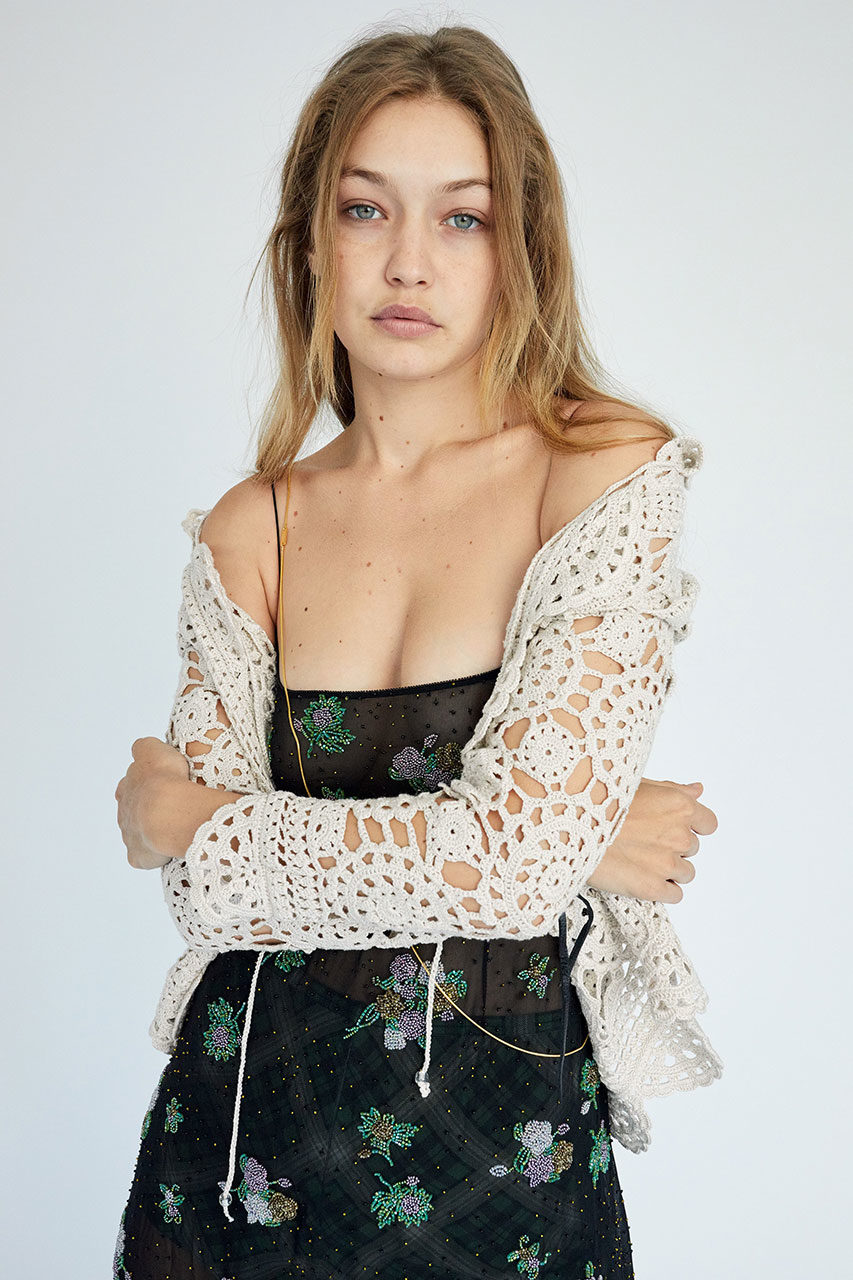
Marc Jacobs Resort 2019, a reissue of his 1993 grunge collection for Perry Ellis
Photo: Juergen Teller/Courtesy of Marc Jacobs
9. Use Collaborations to Reclaim Your Own Past
In 2018, a host of labels cashed in on the nostalgia craze by turning reissues into a collaboration. Anna Sui led the pack with an Urban Outfitters collaboration that saw the designer rethinking many of her early ’90s hits at an accessible price point. Beloved ’90s retailer Delia’s was revived by Dolls Kill, and Versace’s iconic swirling silk prints and Notorious B.I.G. sunglasses served as a reference for the brand’s collaboration with Kith. Marc Jacobs’s reissue of his 1993 grunge collection for Perry Ellis was the most buzzed-about archival news of the year. While technically not a collaboration, it does suggest that the market for throwback garments is at an all-time high.
PSNY x Eileen Fisher
Photo: Courtesy of Eileen Fisher
10. Sustainability Doesn’t Have to Be Boring or a Buzzword
Sustainability is not a niche issue. Everyone, from hypebeasts to hygge-loving ladies, is responsible for caring for our planet—just ask Eileen Fisher and Public School. Together the trio of designers created an entirely upcycled collection that proved being eco-friendly is not a hindrance to creativity. New ideas can flourish in a sustainably minded brand—and so can old ones. At Adidas, Stella McCartney changed almost nothing on her first-ever pair of collaborative Stan Smith sneakers. Instead, she just swapped out real leather for vegan leather. From a distance, you can barely tell these are not your typical Stans—and that’s the point. Customers won’t buy something because it’s sustainable, they’ll buy something because it’s good. Both PSNY x Eileen Fisher and Stella McCartney’s Adidas shoe are testaments to the power of putting good design first.
Originally published on American Vogue.

